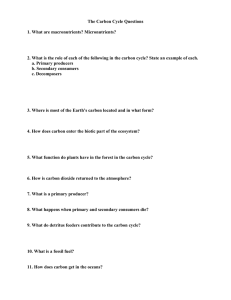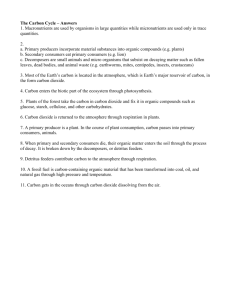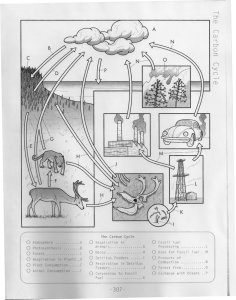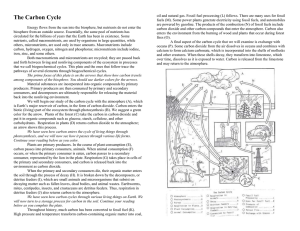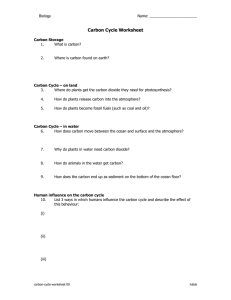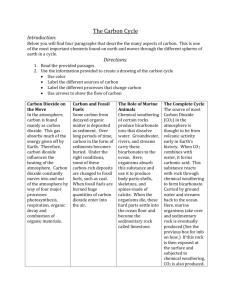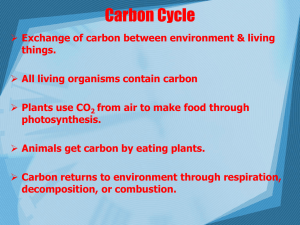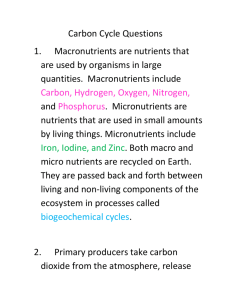The Carbon Cycle Energy flows from the sun into the biosphere, but
advertisement
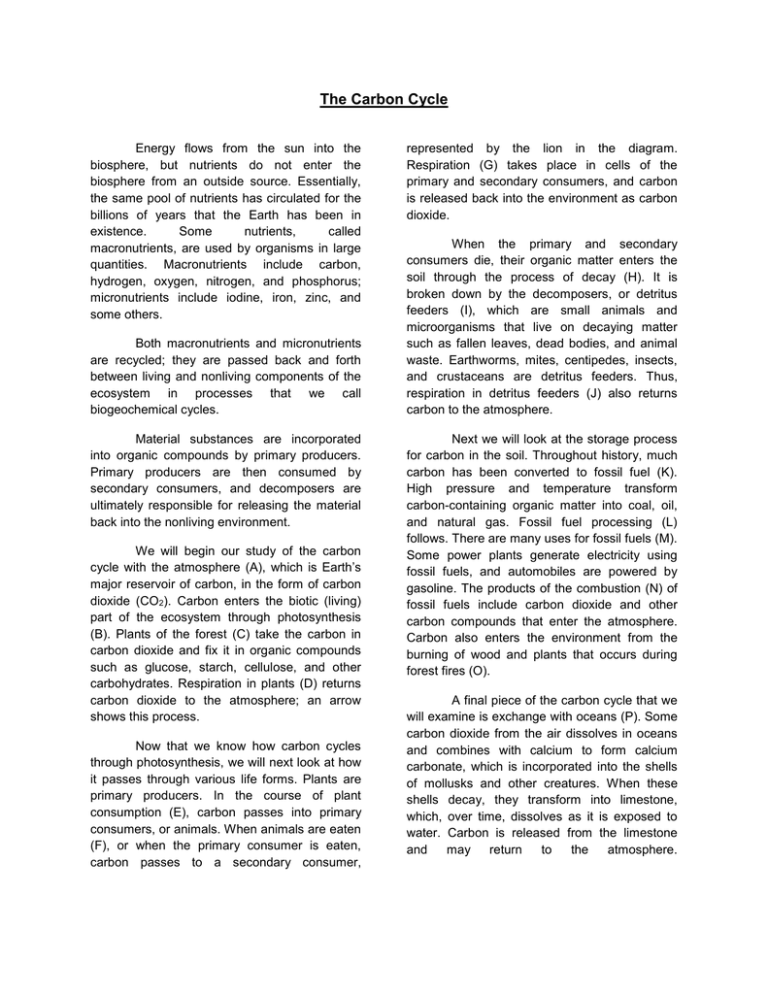
The Carbon Cycle Energy flows from the sun into the biosphere, but nutrients do not enter the biosphere from an outside source. Essentially, the same pool of nutrients has circulated for the billions of years that the Earth has been in existence. Some nutrients, called macronutrients, are used by organisms in large quantities. Macronutrients include carbon, hydrogen, oxygen, nitrogen, and phosphorus; micronutrients include iodine, iron, zinc, and some others. Both macronutrients and micronutrients are recycled; they are passed back and forth between living and nonliving components of the ecosystem in processes that we call biogeochemical cycles. Material substances are incorporated into organic compounds by primary producers. Primary producers are then consumed by secondary consumers, and decomposers are ultimately responsible for releasing the material back into the nonliving environment. We will begin our study of the carbon cycle with the atmosphere (A), which is Earth’s major reservoir of carbon, in the form of carbon dioxide (CO2). Carbon enters the biotic (living) part of the ecosystem through photosynthesis (B). Plants of the forest (C) take the carbon in carbon dioxide and fix it in organic compounds such as glucose, starch, cellulose, and other carbohydrates. Respiration in plants (D) returns carbon dioxide to the atmosphere; an arrow shows this process. Now that we know how carbon cycles through photosynthesis, we will next look at how it passes through various life forms. Plants are primary producers. In the course of plant consumption (E), carbon passes into primary consumers, or animals. When animals are eaten (F), or when the primary consumer is eaten, carbon passes to a secondary consumer, represented by the lion in the diagram. Respiration (G) takes place in cells of the primary and secondary consumers, and carbon is released back into the environment as carbon dioxide. When the primary and secondary consumers die, their organic matter enters the soil through the process of decay (H). It is broken down by the decomposers, or detritus feeders (I), which are small animals and microorganisms that live on decaying matter such as fallen leaves, dead bodies, and animal waste. Earthworms, mites, centipedes, insects, and crustaceans are detritus feeders. Thus, respiration in detritus feeders (J) also returns carbon to the atmosphere. Next we will look at the storage process for carbon in the soil. Throughout history, much carbon has been converted to fossil fuel (K). High pressure and temperature transform carbon-containing organic matter into coal, oil, and natural gas. Fossil fuel processing (L) follows. There are many uses for fossil fuels (M). Some power plants generate electricity using fossil fuels, and automobiles are powered by gasoline. The products of the combustion (N) of fossil fuels include carbon dioxide and other carbon compounds that enter the atmosphere. Carbon also enters the environment from the burning of wood and plants that occurs during forest fires (O). A final piece of the carbon cycle that we will examine is exchange with oceans (P). Some carbon dioxide from the air dissolves in oceans and combines with calcium to form calcium carbonate, which is incorporated into the shells of mollusks and other creatures. When these shells decay, they transform into limestone, which, over time, dissolves as it is exposed to water. Carbon is released from the limestone and may return to the atmosphere.
